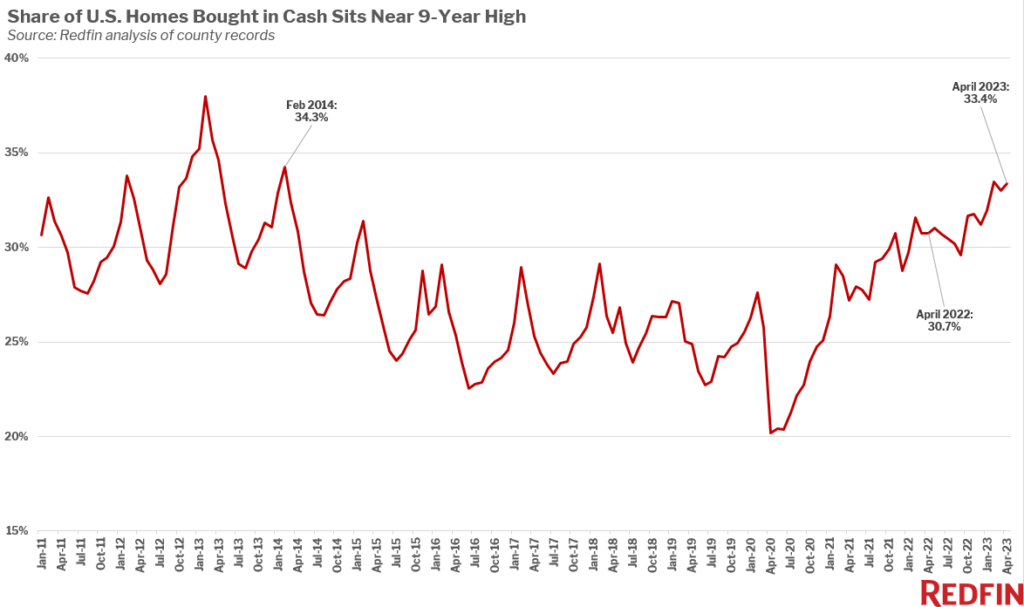6 reasons first time home buyers are struggling

First time home buyers today face the toughest market in over 50 years. Large segments of the US population are locked out of homeownership and wealth creation. Most readers will be familiar with the headline reasons (home prices, high mortgage rates, etc). This article attempts to look beyond the headlines to explore the structural reasons of the lack of affordability, in particular for first time buyers.
In our research and in talking with thousands of first time buyers and their real estate agents, we've identified six underlying drivers that all contribute to the lack of affordability / inability for first-time buyers to compete in today's market:
1) Home Prices relative to Incomes
The most obvious hurdle for homebuyers today is the simple fact that home prices, as a multiple of incomes, are higher than they have been at any point since 1946. Over the last 75+ years the average ratio of house prices to median household income has been around 5x. Since January 2022, that ratio has been above 7x. While increasing mortgage rates dampened home price appreciation in 2022-23, home prices have resumed their increase in the second half of 2023. The net effect of increasing home prices is a higher down payment as well as monthly payment hurdle.

Home Price / Median Household Income 1946-2023. Source: www.longtermtrends.com
House prices are driven by a number of factors both regionally and nationally. However, depending on the methodology used, we have a long-term structural deficit of between 3-5 million homes in the US, which is especially pronounced in the the sub-$500k starter home category in growing metro areas.
2) Mortgage Rates
Few first time buyers are able to buy their starter homes without taking on mortgage debt. The monthly payment affordability is directly driven by mortgage interest rates. Rates for the 30-yr fixed rate mortgage increased from below 3.0% in 2021 to north of 7.0% in 2023. For a $350k starter home purchase, this change in mortgage rates resulted in an increase of the principal & interest payment from $1,328 / month to $2,096 / month, an increase of over $9,216 annually. For the median US household with a post-tax income of $64k, this results in a 14% reduction in disposable income. Few economists expect a return of mortgage rates to the abnormally low rates seen during the pandemic.
30-yr fixed mortgage rate in the US. Source: St Louis Federal Reserve
3) Student Debt
An increasing number of first time homebuyers are considering their first home purchase while still paying off student debt. With the reinstatement of student loan payments in October 2023, this puts incremental budget pressure on potential first time buyers and further reduces their ability to qualify for traditional mortgage financing. Mortgage lenders generally will take into account 0.5-1% of the outstanding student loan balance or the actual monthly payment to determine borrowing capacity. As new student debt carries interest at today's higher rates, the budget pressure of increased student loan payments will not recede anytime soon.
Student Loan Debt to Income Ratio. Source: Student Loan data Initiative
4) Lack of Mortgage Interest Tax Deduction
One of the historical benefits of a mortgage was the ability to deduct mortgage interest from income taxes. However, since the tax changes effected by the 2017 Tax Cuts and Jobs Act (TCJA), the tax deductibility of mortgage interest has a) been capped to the first $750k in mortgage balance and b) has largely been replaced by the standard deduction for most first time homebuyers. Overall, the percentage of taxpayers itemizing deductions (required to take advantage of the mortgage interest tax deduction) dropped from 31% in 2017 to 11% in 2018. For the income brackets of most first time buyers ($50-199k) the drop has been even more pronounced, with less than 20% of households itemizing their taxes.
With a 2024 standard deduction of $14,600 (single) or $29,200 (married), our hypothetical first time buyer purchasing a $350k home with 10% down payment and a 7% interest mortgage would pay ~$22k in interest, not qualifying for a mortgage interest tax deduction if filing as a married couple.
Source: Smart Asset: How did the Trump Tax Bill Affect Itemized Deductions
5) All-cash buyer market share has been increasing
While the real estate market has cooled since the pandemic buying boom, first time buyers are still facing a competitive market. The share of homes bought with cash offers reached a nine-year high in April 2023 at 33%. This is driven by corporate cash buyers continuing to invest in single family homes as well as individual buyers who can afford to make cash offers in order to avoid high mortgage rates. In this environment, a first time home buyer with a mortgage-financed offer will often lose to a professional or all-cash buyer.

6) Traditional financing options aren't competitive
For qualified borrowers and qualified properties, there are several low down payment mortgage options in the market, notably the FHA mortgage (as low as 3.5% down payment) as well as Freddie Mac’s Home Possible (3%) and Fannie Mae’s HomeReady Mortgage. In particular the FHA mortgage has traditionally been an attractive product for first time buyers:
These products generally have limitations on HH income and purchase price caps. The effect of these limitations is that low-down payment mortgages tend to work well in rural and exurban areas where home prices are lower and buyer competition is less. In more competitive urban and suburban markets, the income and home price limitations, as well as the need for extended closing times and additional inspections, make these products non-competitive. A seller choosing between multiple offers will prefer cash buyers, power buyers, well-qualified mortgage buyers without financing contingencies to a low down payment offer.
For a number of potential first time buyers, public and private down payment assistance (DPA) programs are available to bridge the gap between available savings and a required mortgage down payment. Most of these programs suffer from the same competitive dynamics as low down payment mortgages and are often even more restrictive in their eligibility criteria. In addition, most consumers are not aware of the DPA programs available.
Ownify analysis of purchase data in the Triangle area of North Carolina shows that the percentage of $250k-500k single family home purchases completed with a low-down payment mortgage / DPA program has declined from 17% of all sales in 2017 to 2% in 2022:
Why do we care?
The net effect of all of these pressures is that the percentage of first time buyers in the market is the lowest in 40+ years. The average age of a first time homebuyer is now 36, up from 33 as recently as 2021. A growing percentage of the estimated 18M first time homebuyers over the next 10 years will not be able to afford a home, reducing their chance to build financial stability. Of course, this is a problem that disproportionately impacts minorities:
Homeownership by ethnicity / immigration status. Source: Census Bureau
And families with the income and assets to help their children have been playing an increasing role in solving this problem for their children. 50% of first time buyers will receive money from family and friends to afford a home.
However, what about the families and aspiring homeowners who don’t have the generational wealth to support them?
At Ownify, we asked a simple question: “Could we solve this problem by putting first time homebuyers and socially conscious investors on the same team?”
By challenging the traditional options that home buyers have, we’ve built a new path to ownership. Ownify’s zero-debt ownership program creates an investment partnership between first time buyers and investors where both sides win. To learn more, visit Ownify.com


